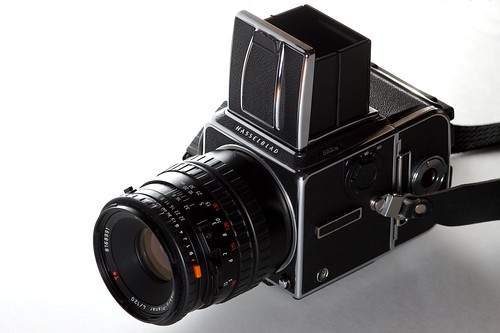
Hasselblad 503C/W with 120mm f/4 Makro Planar; Canon 30D, Canon 200mm f/2.8L, Canon 430EX & LumiQuest SB-II, LumoPro LP120
The second camera on my rental list is the Hasselblad 500 series. There are a few places in my city that rent these, and so I ended up with a 503C/W body and an 80mm f/2.8 CF Planar lens, a 120mm f/4 CFi Makro Planar lens, and a 150mm f/4 CF Sonnar lens. Part 1 of my discussion of it will focus on ergonomics, handling, size weight, etc; Part 2 will show results from the 3 rolls of film I exposed with it, and discuss my final conclusions. Again, since information on Hasselblad camera and lens stats is easily available on the web, I won't be discussing specifics in this area (except for close focus ability).
In terms of size and weight, this is a much more manageable camera than the RZ67, as the following size comparison pictures with a Canon 30D + 200mm f/2.8 lens and a Yashica D TLR show. The 503 has the 120mm f/4 Makro Planar on it. Looking at the same comparisons in the Mamiya RZ67 discussion should give a good idea of the relative sizes of the two cameras.
Worth noting here is that I could easily fit the 503 body with the 80mm lens attached plus the 150mm lens into a Crumpler 5MDH, while the RZ67 with 65mm and 180mm lens was a tight squeeze in my Crumpler 7MDH. This comparison is not quite fair, since the normal lens is usually the smallest for any camera, and I didn't have the Mamiya 110mm lens to compare.
I was already used to a 6x6 waist-level finder from the Yashica D, and while it's certainly nice, it's not as nice as the 6x7 (really 7x7 with movable mask) finder on the RZ67. The ergonomics of the Hasselblad, on the other hand, are just lovely. The camera can be easily cradled in your left hand with a finger on the release, and the other important controls (focus, aperture, shutter) are all on the lens for easy operation with the right hand. While the reduced size and weight vs the RZ67 is what makes this possible, it's possible that this also allows for more camera shake than the rock-solid RZ67, where the weight helps keep the camera steady.
The lenses, on the other hand, are not hugely smaller or lighter than the Mamiya lenses. I spent most of my time with the camera with the 120mm f/4 Makro Planar mounted, because of the close-focusing ability, but I did use all three lenses. In use, all the lenses were very nice; these are the newer lenses without the EV interlock. My only minor complaint is that the focus rings are perhaps a little too damped for how long their travel is (basically all the way around the lens barrel).
Image quality assessments will have to wait until I have all the film processed, but I can discuss the close focus issue now. The 120mm lens is the best in this regard (by design), focusing down to 0.8m, giving 1:4.5. For comparison, the 180mm Mamiya lens focues to 1:3.8 (and the shorter lenses do even better; the normal 110mm lens does around 1:2, although with a shorter working distance). The Hasselblad 80mm and 150mm, by comparison, do 0.8m/1:9 and 1.2m/1:7.1, respectively. While there are options for improving the close up situation (filters, extension tubes, and tele-converters), all of them require something additional to be carried. Being able to carry around any lens with focal length less than 180mm and get at least 1:3.8, instead of being limited to one specific lens or extra accessories, is a major point in favor of the RZ67.
While I didn't do any long walks with the Hasselblad, I can see that the smaller size and lighter weight would be quite a bonus, especially when traveling. For equivalent setups (body, waist level finder, one film back, wide angle lens, telephoto lens), the Hasselblad saves about 1000g, or 2.2lbs, compared to the Mamiya, which is not insignificant. Of course, a rangefinder setup could save 800-1000g compared to even the Hasselblad, making such a setup ridiculously light.
One other comparison: the Hasselblad looks gorgeous, especially in chrome, while I think the most anybody could manage to say about the Mamiya is that it looks solid or perhaps handsome.
On the positive side, the Hasselblad is a good-looking, nicely sized, and easy to use camera; on the negative, I have some concerns about close focus, and handheld use. Part 2 will examine some frames from San Francisco, as well as some food photography.
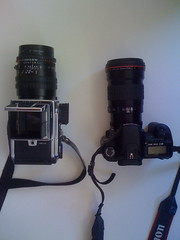
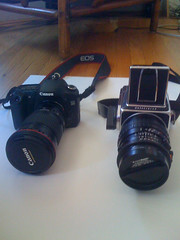
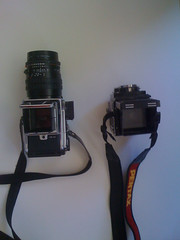
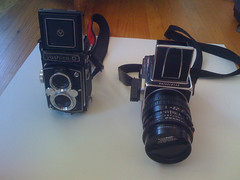
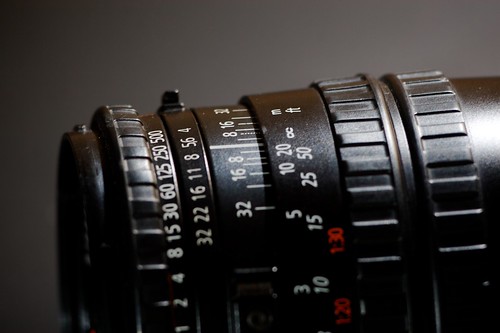
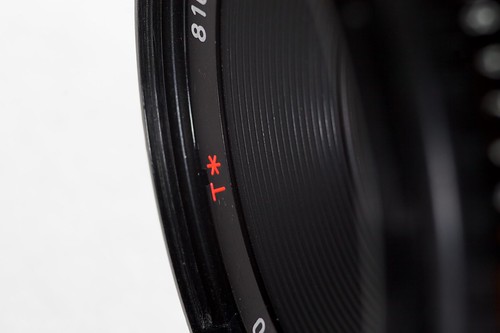
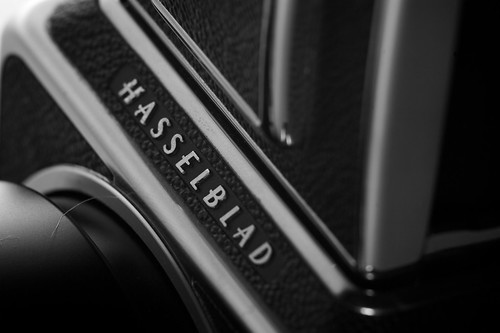

No comments:
Post a Comment